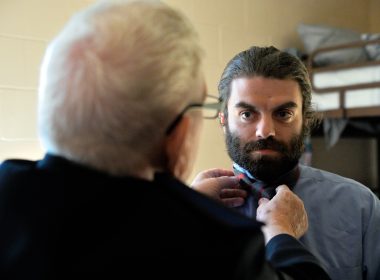Seattle

By Vivian Borkgren –
Walk with me through the William Booth Center in Seattle, past the busy entrance desk, through a large room filled with rows and rows of upper and lower bunks, then enter a smaller, quieter room lined on each side with five hospital beds. There are clothes, backpacks, and personal belongings on most of the beds.
Two men are resting: one elevates his discolored leg on the overhead bedstand; the other has a clean dressing on what remains of his amputated left leg. Crutches are propped against their beds. Another man sits quietly waiting for an admission interview by the nursing staff. You have entered the first men’s medical respite program for the homeless in this city.
Limits on acute hospital stays and the shift to home health care is of little help to those with no home to which they can return. Responding to the growing need for post-hospital care of the homeless, the Seattle Public Health Department with Harborview Medical Center implemented this medical respite program at the William Booth Center in February 1996.
Starting with six beds, the shelter offers food, and skilled nursing care. Patients must be referred by a physician or medical practitioner, meet the criteria for homelessness, be able to perform activities of daily living independently, and abstain from all drugs and alcohol while at the center. Five beds have been added, plus three private rooms for special care needs such as hepatitis and other infectious diseases. There are plans to increase the bed space to 17 in the future.
Although the program was begun to offer interim physiological healing, there is a bonus opportunity for these men to find spiritual healing through center and corps services, as well as access to many progressive programs offered by The Salvation Army at this and other area locations. Many program participants have transitioned into employment as a result of their average 10 to 12 day stay in the respite program.
As we continue our walk through the Center, we will see many people who have entered through the medical respite or one of the other center programs. Alan Brooks is now working part time and paying his way in the shelter; Charles Davenport is in the third month of the transitional living program; Evan Fitzgerald took cooking classes at the community college through the Veterans Administration connection made while here. George Hunter, who helped with chapel services while here, now attends church services even though he has found permanent housing elsewhere.
Working hand in hand with Harbor View Medical Center and the Health Department, this program is a model of the much needed partnership of the community and The Salvation Army for the total healing of those in need.











